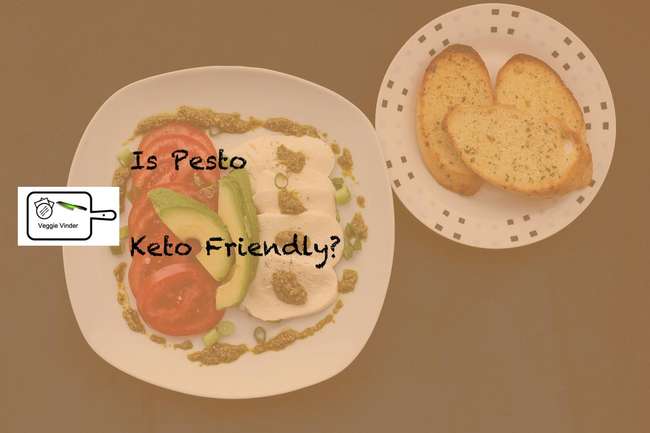Is Pesto Keto Friendly?
Pesto is a delicious sauce that has become a staple at Italian restaurants around the globe.
But did you know pesto is also a great way to get rid of stubborn belly fat?
Pesto is a creamy sauce made from basil leaves, garlic, pine nuts, olive oil, Parmesan cheese, and other spices.
It’s often served over pasta or vegetables.
The sauce is typically eaten cold, but it can also be heated up.
Pesto is rich in antioxidants, fiber, protein, and omega-3 fatty acids.
These nutrients help boost metabolism and burn calories.
Plus, pesto contains anti-inflammatory properties that help reduce inflammation in the body
Is Pesto Keto Friendly?
Pesto is a delicious sauce that can be used in many different dishes. It is typically made from basil, garlic, pine nuts, olive oil, Parmesan cheese, salt, and pepper. This pesto recipe is very easy to make and tastes great!

Is pesto high in carbs?
Pesto is made from basil leaves, olive oil, garlic, pine nuts, and parmesan cheese. These ingredients are low in carbohydrates. However, if you add other ingredients such as tomato paste, anchovies, or olives, these ingredients could increase the carb count.
Is basil OK on keto?
Pesto is a sauce made from basil leaves, garlic, olive oil, pine nuts, and Parmesan cheese. It is used as a condiment for pasta dishes, soups, and salads. Pesto is usually served cold but it can be heated as well. It is very versatile and can be used with different types of pasta. What is the difference between white and whole wheat flour? Answer: White flour is refined flour that has been milled into a finer particle size. Whole wheat flour is unrefined flour that has not been bleached or enriched. Both flours are used in baking, although whole wheat flour tends to give baked goods a slightly nutty flavor.
How many carbs are in pesto?
Yes, basil does contain carbs. However, it is low carb because it only contains 1 gram of net carbs per tablespoon. This is about half of what a slice of bread has. How long does it take to cook pasta in a pressure cooker? Answer: Pasta cooks quickly in a pressure cooker. In a regular pan, it takes longer to cook. A pressure cooker uses less liquid than a regular pan. So, if you put enough water in the pressure cooker, it will cook faster.
Can you eat pesto keto?
Basil is not a good choice for a ketogenic diet. It contains carbohydrates and sugar. Basil is very rich in potassium, but it is also very high in sodium. Basil is also high in oxalic acid, which can lead to kidney stones. What is the difference between coconut oil and palm oil? Answer: Coconut oil and palm oil are two different oils. Both of these oils are used in many recipes. Palm oil is extracted from the fruit of the palm tree. Coconut oil is extracted from the meat of the coconut.
Is pesto carb or protein?
Yes, pesto is a great ketogenic diet recipe because it contains healthy fats such as olive oil. However, if you are looking for a low carb version of pesto, try using almond butter instead of olive oil. Almond butter is lower in fat and higher in protein than olive oil.
Is pesto good for a low carb diet?
Pesto is a popular Italian sauce that uses olive oil, garlic, cheese, and herbs. Pesto is usually served with pasta, but it can also be used as a dip for bread sticks or crackers. It is also a delicious topping for pizza.
Is pesto Keto friendly?
Yes, pesto is a great choice for a low carb diet. It is a healthy alternative to butter and margarine. It is also lower in calories than regular butter and margarine. However, if you are looking for a healthier option, you can try making your own pesto using cauliflower instead of basil.
Does basil contain carbs?
Pesto is usually made from basil leaves, garlic, olive oil, pine nuts, parmesan cheese, salt, and pepper. It is a popular sauce used in Italian cuisine. Pesto is typically served as a dip or spread on pasta, bread, vegetables, pizza, and other dishes. In addition to being delicious, pesto is also very nutritious. It contains many vitamins and minerals such as vitamin A, B6, C, E, K, magnesium, phosphorus, potassium, zinc, iron, copper, manganese, calcium, sodium, and fiber. It is also low in saturated fat and cholesterol.
